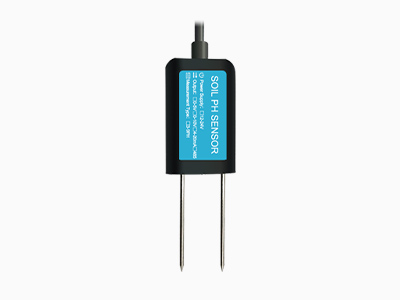Irrigation and fertilization are vital components of modern agricultural practices, ensuring optimal crop growth and maximizing yields. However, there is always room for improvement in these techniques to enhance their efficiency, minimize resource wastage, and mitigate environmental impacts. This article aims to explore various strategies and technologies that can be employed to improve irrigation and fertilization methods in agriculture.

I. Precision Irrigation Techniques:
Drip Irrigation: Drip irrigation is a water-efficient technique that delivers water directly to the plant roots, minimizing evaporation and water loss. By employing a network of tubes or pipes, water is slowly released near the plants, ensuring maximum absorption and reducing water wastage. This method allows for precise control of water delivery, optimizing water usage and reducing overall irrigation requirements.
Sprinkler Irrigation:
Sprinkler irrigation involves the distribution of water through sprinklers, mimicking natural rainfall. Modern sprinkler systems employ advanced technologies such as weather-based sensors and variable rate application to adjust water delivery based on specific crop needs and prevailing weather conditions. These systems ensure uniform water distribution and minimize water runoff, leading to efficient water utilization.
Smart Irrigation Systems:
Advancements in sensor technology and data analytics have paved the way for smart irrigation systems. These systems utilize soil moisture sensors, weather data, and plant-specific requirements to deliver water precisely when and where it is needed. Smart irrigation controllers automatically adjust water application based on real-time data, optimizing irrigation schedules and reducing water waste.
II. Efficient Water Management:
Soil Moisture Monitoring: Regular monitoring of soil moisture levels is essential for efficient irrigation management. Soil moisture sensors can be installed at different depths in the root zone to provide accurate information about soil water content. This data helps farmers determine the appropriate timing and duration of irrigation, avoiding both overwatering and underwatering.
Irrigation Scheduling:
Proper irrigation scheduling is crucial for maximizing water use efficiency. By considering factors such as crop type, growth stage, weather conditions, and soil characteristics, farmers can develop precise irrigation schedules. Evapotranspiration-based scheduling methods, such as the use of reference evapotranspiration (ET0) and crop coefficients (Kc), help determine crop water requirements accurately.
Water Recycling and Reuse:
Implementing water recycling and reuse systems can significantly reduce freshwater consumption in agriculture. Techniques such as collecting and treating runoff water, using wastewater from various sources (after appropriate treatment), and implementing closed-loop irrigation systems contribute to sustainable water management practices.
III. Improved Fertilizer Application:
Soil Testing and Nutrient Management: Conducting regular soil testing allows farmers to assess nutrient deficiencies and tailor fertilizer application accordingly. By understanding the specific nutrient requirements of different crops, farmers can apply fertilizers more effectively, minimizing excess usage and potential environmental pollution. Nutrient management plans based on soil tests help optimize fertilizer application and reduce nutrient losses.
Controlled-release Fertilizers:
Controlled-release fertilizers (CRFs) are designed to release nutrients gradually over an extended period. These fertilizers provide a sustained supply of nutrients to plants, reducing nutrient leaching and volatilization. CRFs improve fertilizer use efficiency, decrease environmental pollution, and reduce the frequency of fertilizer applications.
Precision Fertilizer Application:
Utilizing precision agriculture techniques, such as variable rate application (VRA), helps optimize fertilizer distribution across the field. VRA technology uses yield maps, soil mapping, and remote sensing data to create prescription maps that guide automated fertilizer applicators. This approach ensures targeted and precise nutrient delivery, matching the specific needs of different areas within a field.
IV. Integrated Irrigation-Fertilization Systems:
Fertigation: Fertigation involves the application of fertilizers through the irrigation system. This technique allows for simultaneous water and nutrient delivery, ensuring precise and efficient absorption by plants. Fertigation enables farmers to provide the right amount of nutrients at the right time, optimizing fertilization practices while conserving water.
Combined Sensor Technologies:
Integrating soil moisture sensors with nutrient sensors can provide comprehensive information for optimal irrigation and fertilization management. These combined sensor technologies allow farmers to monitor both water availability and nutrient levels in real-time, facilitating informed decision-making regarding irrigation and fertilization requirements.
Decision Support Systems (DSS):
DSS tools combine various data sources, including weather data, soil information, and crop models, to provide recommendations for irrigation and fertilization management. These systems use algorithms to analyze data and generate personalized prescriptions for farmers. DSS tools aid in optimizing resource allocation, reducing waste, and maximizing crop productivity.

Conclusion: Improving irrigation and fertilization techniques is crucial for sustainable agricultural practices. Precision irrigation methods, efficient water management strategies, optimized fertilizer application, and the integration of innovative technologies all contribute to enhanced resource utilization, increased crop yields, and reduced environmental impacts. By adopting these practices, farmers can achieve greater efficiency, conserve water resources, minimize nutrient losses, and ensure a more sustainable future for agriculture. Continued research and innovation in this field will further enhance our ability to improve irrigation and fertilization practices, fostering a more resilient and productive agricultural sector.